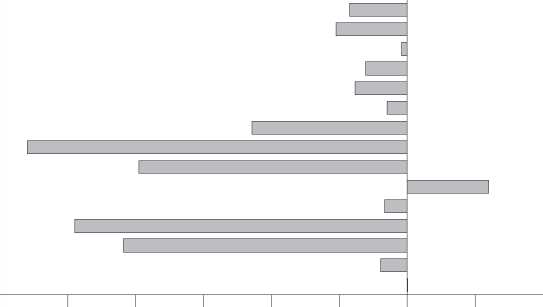Gerontocracy in Motion?
Figure 1
Changes in Population Shares of Under 20 Year Olds in EU-15 Countries During the 1990
%-points
Austria
Belgium
Denmark

-6 -5 -4 -3 -2 -1 0
1
Finland
France
Germany
Greece
Ireland
Italy
Luxembourg
Netherlands
Portugal
Spain
Sweden
UK
RWI
ESSEN
Source: United Nations Demographic Yearbook, various volumes.
While virtually all European countries share the experience of declining pop-
ulation fractions of the young, there is still considerable heterogeneity across
the EU-15 regarding the relative size of these fractions and thus the stage al-
ready reached in the ageing process. To illustrate this point, Figure 2 reports
the population shares of individuals younger than 20 years of age in the EU-15
countries for 1999. The relative size of this cohort varies by more than 10 per-
centage points across European countries with Italy (19.9 %) displaying the
lowest and Ireland (30.6 %) the highest share. The average share of under
20 year olds in the EU-countries is approximately 24 %.
Within the EU-15 countries, Ireland plays an exceptional role since this coun-
try still displayed a very large proportion of the young at the end of the last
century, despite the documented (Figure 1) sharp decline in this age group
during the 1990s. Another striking feature is the below-average population
fraction of the young throughout all Mediterranean countries. Since these
southern countries have been emigration regions for a long time and emi-
grants typically leave the country in younger years, to some extent this might
be the result of selective emigration. In essence, upon elimination of the Irish
and the Mediterranean figures from the graph, cross-country heterogeneity of
the population fraction of the very young would be limited.
In the modern era, the age structure of any population is shaped not only by
natural demographic processes, i.e. fertility and mortality, but also by migra-
tion. By contrast to the countries of Europe’s southern border, since the end of
More intriguing information
1. Estimating the Economic Value of Specific Characteristics Associated with Angus Bulls Sold at Auction2. Fiscal Sustainability Across Government Tiers
3. Der Einfluß der Direktdemokratie auf die Sozialpolitik
4. The name is absent
5. Ruptures in the probability scale. Calculation of ruptures’ values
6. BODY LANGUAGE IS OF PARTICULAR IMPORTANCE IN LARGE GROUPS
7. The name is absent
8. The name is absent
9. FUTURE TRADE RESEARCH AREAS THAT MATTER TO DEVELOPING COUNTRY POLICYMAKERS
10. Qualifying Recital: Lisa Carol Hardaway, flute